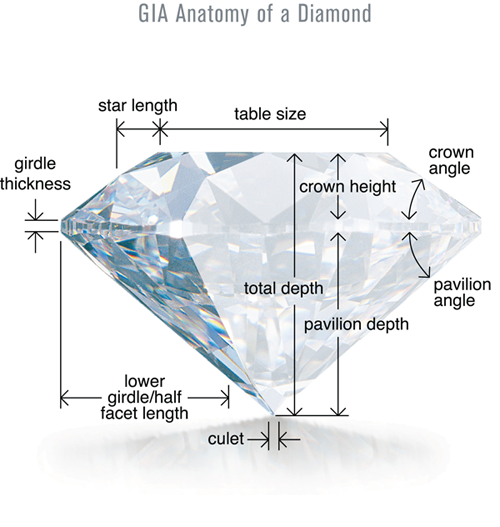It has been said that few things in nature are absolutely perfect. The same holds true of diamonds. Part of what makes a diamond unique is what is commonly referred to as a diamond’s clarity characteristic. (more…)
It has been said that few things in nature are absolutely perfect. The same holds true of diamonds. Part of what makes a diamond unique is what is commonly referred to as a diamond’s clarity characteristic. (more…)
When browsing for jewelry, one might be captivated by the glimmer of a diamond’s sparkle, and assume that most diamonds are colorless. And while it’s true that certain diamonds have colors so blindingly brilliant that they take on beautiful hues of the rainbow, truly colorless diamonds are actually quite rare. (more…)

Some diamond cut’s never go out of style, especially when they boast a royal heritage and have been redesigned and reinvented. Such is the case with the popular Asscher cut. (more…)
Few things in nature are absolutely perfect. This is also true with diamonds. As touched on in the first part of the clarity series, diamonds have internal features called inclusions and surface irregularities called blemishes. Together, inclusions and blemishes make up a diamond’s clarity characteristic. (more…)
Diamond clarity is one of the four quality factors (the 4Cs) that describe and determine the value of a diamond. By definition, clarity means “a gemstone’s relative freedom from inclusions and blemishes.” These two terms are locational- blemishes are found on the outside of the gem and inclusions are located on the inside. Both of these clarity characteristics can dim the brilliance of a diamond, though some are so minute that they are invisible to the naked eye. (more…)

Angelina Jolie and Brad Pitt made headlines earlier this year when they finally announced their engagement. Soon thereafter, Jolie was spotted wearing an engagement ring that featured a large, Emerald cut diamond center stone. While an Emerald cut center stone is not the traditional look for an engagement ring, non-traditional engagement rings seem to be making news more frequently. (more…)

When it comes to diamonds, most consumers tend to use the words “cut” and “shape” interchangeably. But for diamond professionals, there is a big difference. Diamond Shape refers to the outline of the stone (pear, oval, round, etc.). Diamond cut refers to a stone’s facet arrangement. So a shape can be faceted in a variety of ways, or cutting styles. (more…)

When a diamond interacts with light, every angle and every facet affects the amount of light returned to the eye. The sparkle of a diamond, then, has everything to do with how well the cut of the diamond was planned and executed. Although a diamond’s value is based on its unique combination of color, clarity, cut, and carat weight (the 4Cs), a diamond’s cut is the most complex to assess, and it’s the only component that can be directly affected by the diamond cutter. (more…)

Diamonds are among the hardest natural minerals on Earth, yet they require special care to keep them shining and looking their absolute best. In fact, a diamond’s sparkle can be lost by the mere touch of a finger, which can cause dirt to collect on the diamond. (more…)
Most consumers don’t realize the long, complicated, precarious journey a diamond takes from its humble beginning amidst tons of rock in the Earth to its sparkling transformation in a jewelry store counter. An especially critical point in the diamond’s journey is its time with the diamond artisan, who must cut the diamond to maximize its beauty. (more…)
When it’s time to buy a diamond, many people spend a lot of time educating themselves on the 4Cs of diamond quality, and then determining what the personal trade-offs between those various quality characteristics will be. (more…)
When men and women really start looking into diamond grading, a common question is, “Why does the GIA color grade start with a D?” (more…)